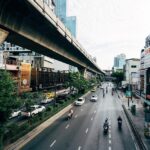Thailand’s red light districts represent a complex and controversial aspect of the country’s social and economic landscape, deeply intertwined with historical, cultural, and economic factors. These areas, primarily located in major urban centers like Bangkok and Pattaya, have gained international notoriety for their vibrant and often misunderstood entertainment zones. While often sensationalized in media and popular culture, these districts are far more nuanced than simplistic stereotypes suggest, involving intricate social dynamics, economic survival strategies, and deep-rooted systemic challenges that extend far beyond surface-level perceptions.
Historical Context and Social Origins
The emergence of Thailand’s red light districts can be traced back to complex socioeconomic transformations during the mid-20th century. Following World War II and during the Vietnam War era, economic instability and limited opportunities in rural regions drove significant population migrations to urban centers. Young individuals, particularly from impoverished northeastern provinces, sought economic alternatives in metropolitan areas. The entertainment and sex work industries became potential pathways for survival, offering income opportunities in environments with limited formal employment options.
These districts evolved not merely as spaces of adult entertainment but as intricate economic ecosystems reflecting broader societal inequalities. Poverty, limited educational access, and structural economic constraints contributed to the development of these zones, creating complex networks of economic interdependence that challenge simplistic moral judgments.
Geographic Distribution and Key Locations
Thailand’s red light districts are predominantly concentrated in major urban areas, with Bangkok’s Patpong, Nana Plaza, and Soi Cowboy being the most internationally recognized zones. Pattaya’s Walking Street represents another significant entertainment district, attracting diverse international visitors. Each location possesses unique characteristics, ranging from high-end establishments to more modest venues, reflecting varied economic segments and target demographics.
These districts are not monolithic but represent diverse ecosystems with multiple entertainment formats. Some areas cater to international tourists, while others serve local populations, creating intricate social landscapes that defy simplistic categorizations. Understanding these nuanced environments requires moving beyond sensationalist narratives and recognizing the complex human experiences embedded within these spaces.
Economic and Social Dynamics
The economic significance of these districts extends far beyond immediate entertainment revenues. They represent substantial economic contributors, generating significant tourism income and supporting numerous auxiliary industries. Local businesses, including hotels, restaurants, transportation services, and retail establishments, benefit indirectly from these entertainment zones. The economic ecosystem is remarkably sophisticated, involving complex networks of employment, service provision, and economic interdependence.
However, these economic benefits coexist with significant social challenges. Concerns about exploitation, human trafficking, and systemic vulnerabilities remain critical issues requiring nuanced, compassionate approaches. Responsible engagement demands recognizing individual agency while simultaneously addressing structural inequalities that create these economic environments.
Legal and Regulatory Frameworks
Thailand’s legal approach to these districts is complex and often ambiguous. While explicit sex work remains technically illegal, enforcement practices are inconsistent and pragmatic. Regulatory frameworks involve intricate negotiations between local authorities, business operators, and broader societal expectations. The government’s stance oscillates between tacit tolerance and periodic regulatory interventions, reflecting the challenging balance between economic realities and social norms.
International pressure, human rights considerations, and internal social movements continually reshape these regulatory landscapes. Recent years have witnessed increased emphasis on worker protections, health regulations, and efforts to combat exploitative practices, signaling evolving perspectives on these complex social environments.
Cultural Perspectives and Global Perceptions
Global perceptions of Thailand’s red light districts often reflect problematic orientalist narratives that oversimplify complex social realities. These areas represent far more than stereotypical representations, embodying intricate human experiences shaped by economic necessities, cultural transformations, and individual survival strategies. Understanding requires moving beyond sensationalist portrayals and engaging with nuanced, empathetic perspectives.
Thai society’s approach to these districts is markedly different from external interpretations. Cultural attitudes emphasize pragmatism, economic survival, and complex social negotiations rather than absolute moral judgments. This perspective demands recognition of individual agency and systemic challenges that create such economic environments.
Conclusion and Future Considerations
Thailand’s red light districts represent complex social spaces that defy simplistic categorizations. They embody intricate intersections of economic survival, cultural dynamics, and individual experiences. Future approaches must prioritize comprehensive understanding, harm reduction strategies, and systemic interventions that address root economic inequalities. Meaningful engagement requires moving beyond judgment toward compassionate, nuanced perspectives that recognize human complexity and structural challenges.









